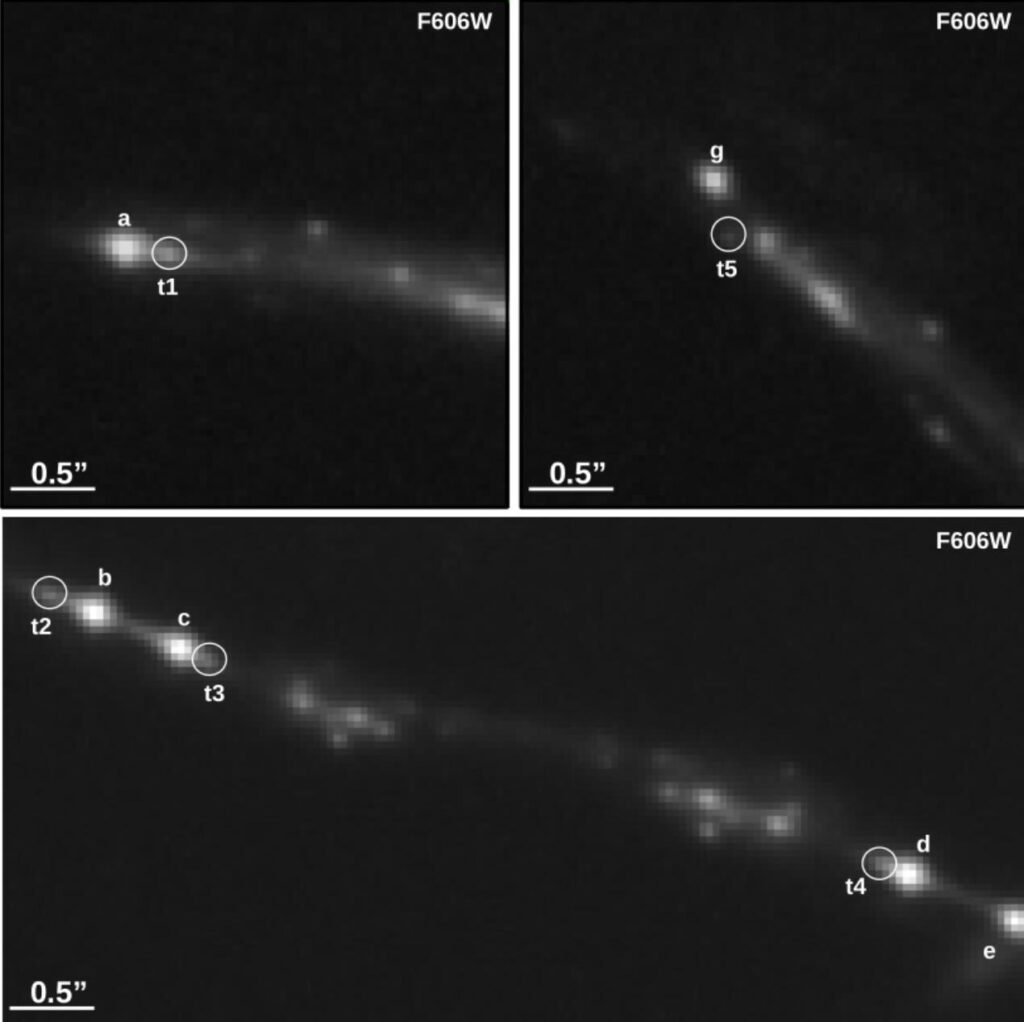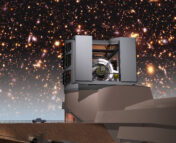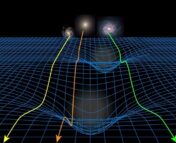
This guest post was written by Riley Owens, a postbaccalaureate researcher for the American University of Sharjah and West Virginia University. His research focuses upon developing software to characterize star cluster observations, as well as the impact massive stars—and the HII regions they form—have upon the evolution of our galaxy. In his free time, he enjoys playing with his dog and long phone calls with friends.
Title: Godzilla, a monster lurks in the Sunburst galaxy
Authors: J. M. Diego, M. Pascale, B. J. Kavanagh, P. Kelly, L. Dai, B. Frye, T. Broadhurst
First Author’s Institution: Instituto de Física de Cantabria
Status: Available on arXiv
The Sunburst Arc is a distant galaxy gravitationally lensed by a foreground galaxy cluster, such that it appears as 4 different arcs. Though it’s best known for leaking ionizing radiation (important to reionization—see more here), its unique image can test strong lensing models, which use the principles of general relativity to predict how the cluster’s mass bends light from the arc.
In previous studies, astronomers identified an anomalous image in the galaxy, which they suggest as a transient stellar object (hereafter ‘the transient’). Though similar in brightness to other repeatedly imaged regions of the galaxy, only one image of the transient is obvious. Other images of the transient are not apparent where expected (Figure 1).

Making lenses
To investigate this, the authors of today’s paper treated the foreground cluster and arc with their own lensing model (see Figure 2) using two constraints: (i) the multiple images of distinct sources in the galaxy, and (ii) the lensing’s critical points.
In the former, one can identify images caused by the lensing and determine if they came from the same or different sources. Astronomers confirm this by spectroscopic observations; two images of the same object should have similar spectra. Identifying the locations of images of the same objects limits how the foreground cluster bent light from the source on its way to us.
Critical points are locations on the sky which lie on critical curves. These curves define where the magnification of background objects by the cluster is (theoretically) infinite. Critical points occur roughly equidistant between pairs of images of the same source, so identifying them relies upon first confirming the origin of images (as above).

Once they prepared the model, the authors identified 5 images in the arc as potential lensed images of the transient (Figure 3). Identifying its other images sets limits on its magnification, constraining its identity. The larger the magnification, the less bright the transient must be (before lensing) to explain its observed brightness. Presuming they are true images, they find the transient’s minimum magnification is 600 times. If they are not other images of the transient, (i.e. the real other images are unobservably faint), this implies a larger magnification of the transient—perhaps several thousand times.

What is the transient?
The transient’s consistent brightness and compactness limit its identity. If the transient were a brief event (like a supernova), we would expect its other images (such as in Figure 3) to ‘light up’ as the supernova’s light arrives at each image. This is because the light from each image is bent differently, so it travels different distances. But in the past ~7 years (longer than the expected time delay between images) of observations of the arc, no significant changes in its appearance have occurred. If it were a supernova, it would be an unusually long one. So, it must be an object stable for years, but extremely luminous. It could be a large star cluster, but the transient’s minimum magnification (>600 times), limits its maximum size to ~0.5 parsecs; far smaller than a star cluster.
Using these constraints, the authors identified two suspects: a black hole accretion disc, or an extremely bright star. A black hole’s luminosity scales with its mass, so to explain the transient’s brightness, they assume a modest black hole (~106 Solar masses). Accretion discs have unique features, particularly strong X-ray emission, though they conclude the X-ray brightness of a black hole of this mass would be too little to appear in X-ray observations from the Chandra X-ray Observatory. Black hole accretion discs often have intense Lyman-ɑ emission, but this was not evident in the transient’s spectrum obtained by the Very Large Telescope’s X-shooter instrument. Nor was more energetic radiation, known as Lyman continuum, observed by ultraviolet measurements of the Sunburst Arc with the Hubble Space Telescope. These nondetections disfavor a black hole.
Their preferred candidate is a luminous blue variable (LBV) star. These are massive, hot stars which experience irregular periods of intense outbursts, where the star can dramatically change in size and brightness, becoming so bright they may be mistaken for supernovae. These episodes can last decades. Thus, an LBV during an outburst matches the time scale and brightness of the transient. Assuming the lower bound of 600 times magnification, this would make the LBV the brightest star observed ever. But the magnification’s upper bound of several thousand times would place it on par with the brightness of other LBV outbursts. Because of the object’s extreme brightness, the authors name it Godzilla.
Does Godzilla have siblings?
Godzilla may be the first LBV star identified at cosmological distances, but how many might be accessible in similar systems? Assuming conservative estimates of the abundance of LBV stars at redshifts 1 < z < 3, their outburst length, and magnification probability (by >20 times), the authors suggest there are several thousand LBVs at a time observable by JWST, though the true number is likely larger.
These stars are best found in magnified arc systems, many of which have been surveyed or are the target of future surveys. Unresolved objects previously identified as star clusters could be LBVs. Because of their small size and extreme magnification, the authors postulate these LBVs could constitute new tests of dark matter, especially its substructure.
Astrobite edited by: Mitchell Cavanagh
Featured image credit: NASA and Judy Schmidt




